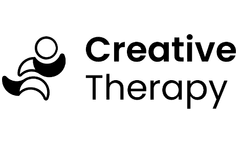Refine by
Lower Limbs Articles & Analysis
22 articles found
At the same time, when the puncture site is the femoral artery, the lower limb on the puncture side should be kept straight and immobilized for 12 hours to prevent bleeding and hematoma formation. When the puncture site is the radial artery, the limb on the surgical side should be slightly higher after surgery, and do not sag. ...
Diabetes is the eighth leading cause of death and disability worldwide and a leading cause of ischaemic heart disease, blindness, kidney failure, stroke and lower limb amputation. The most common forms of diabetes are type 1 diabetes and type 2 diabetes. ...
A DVT is a blood clot that occurs in the veins of lower limbs. They occur most often while in hospital after surgery, during long-haul flights and during and in the six months after pregnancy, mainly due to inactivity. ...
The QUEST study (High-FreQUEncy Nerve Block for PoST-Amputation Pain), is a randomized controlled study of 180 patients at 25 clinical study sites in the U.S. Recruitment for the study was completed in late 2021. Results are blinded until after participants have finished a twelve-month follow-up. ...
The current goal of her therapy is to strengthen the trunk and hip muscles and improve the Range of Motion of the lower limbs. Below we show how Sofie's conventional exercise therapy can be digitised. ...
CASE PLANNING The bilateral upper extremity fractures, the pre-existing contralateral lower limb amputation with loss of the prosthesis, and the patient's need for immediate weight bearing on her right lower extremity were all considerations in proceeding with pelvic ring fixation using two CurvaFix IM Implants. ...
The main goal during her therapy is to practise and stimulate targeted movements for both the upper and lower limbs. Throughout her therapy Tonia seems to respond well to Neuro-Developmental Treatment (NDT) and the accompanying facilitations. ...
About two-thirds of those that experience arm paralysis after stroke are unable to fully use their affected limb six months after stroke (1-3). Not having a fully functional arm and hand after a stroke is not only frustrating but also devastating to many individuals. ...
Pheezee is appropriate for upper limb, lower limb, and spinal cord evaluations. It is a useful tool for real-time monitoring and tracking of a patient's recovery. ...
The STS maneuver is mainly used to assess lower limb strength, balance and also fall risk in elderly people [1]. ...
Results within the normative values are indicative of good voluntary motor control and adequate proprioception of the lower limbs, as well as the range of motion and strength for mobility. ...
In the case of a Guillain-Barré, it will stimulate the motor cortical areas of the lower limbs in order to help the patient recover sensations and improve his walking pattern.. ...
Every year, surgeons perform a lower-limb amputation due specifically to diabetes on approximately 73,000 patients in the US alone. Annually there are over 1 million limb amputations worldwide. Most of these amputations are performed for the treatment of non-healing diabetic foot ulcers that resulted from PAD (Peripheral Arterial Disease). ...
As the most advanced stage of peripheral arterial disease (PAD), chronic limb-threatening ischemia (CLTI) is associated with a high risk of lower-limb loss and mortality. ...
Total Balance Pro We combined three protocols – the Modified Clinical Test of Sensory Interaction on Balance (mCTSIB), the Limits of Stability (LOS) and the Sit-to-Stand (STS), to analyze the patient balance through six critical categories: Proprioception, Vestibular & visual input, Postural stability, Lower limb strength, Reflexes & ...
At the moment, it has twelve protocols for balance assessment (Figure 1), which allow the identification of balance disorders and muscle strength problems in the lower limbs, using the PhysioSensing pressure plate or force plate. ...
It is a dedicated biomechanical device for rehabilitation in case of lost or restricted mobility of limbs. Its operating concept is based on repeating the human motion biomechanics under proportional mitigation of the efforts required to make such. ...
The aim of this study is to investigate whether the degree of spasticity changes in people watching movement in virtual reality as a result of intervention with a therapeutic ...
IT improved distal pQCT-derived bone mineral density (BMD) of the upper limb (ND radius: total BMD = 8.55 ± 2.26% versus 1.50 ± 2.04%, p = 0.040 and trabecular BMD = 1.86 ± 0.90% versus -1.30 ± 0.81%, p = 0.029) and lower limb (ND tibia trabecular BMD = 1.22 ± 0.55% versus -0.82 ± 0.50%, p = 0.017), more ...
Ingestion of this specific type of arsenic can also cause a reduction in blood cell production, liver enlargement, loss of sensation in the limbs, and brain damage. A study done in Taiwan about the link between long-term exposure to inorganic arsenic in drinking water and Blackfoot disease showed that there was a direct link between the two. Further findings indicate that ...
















